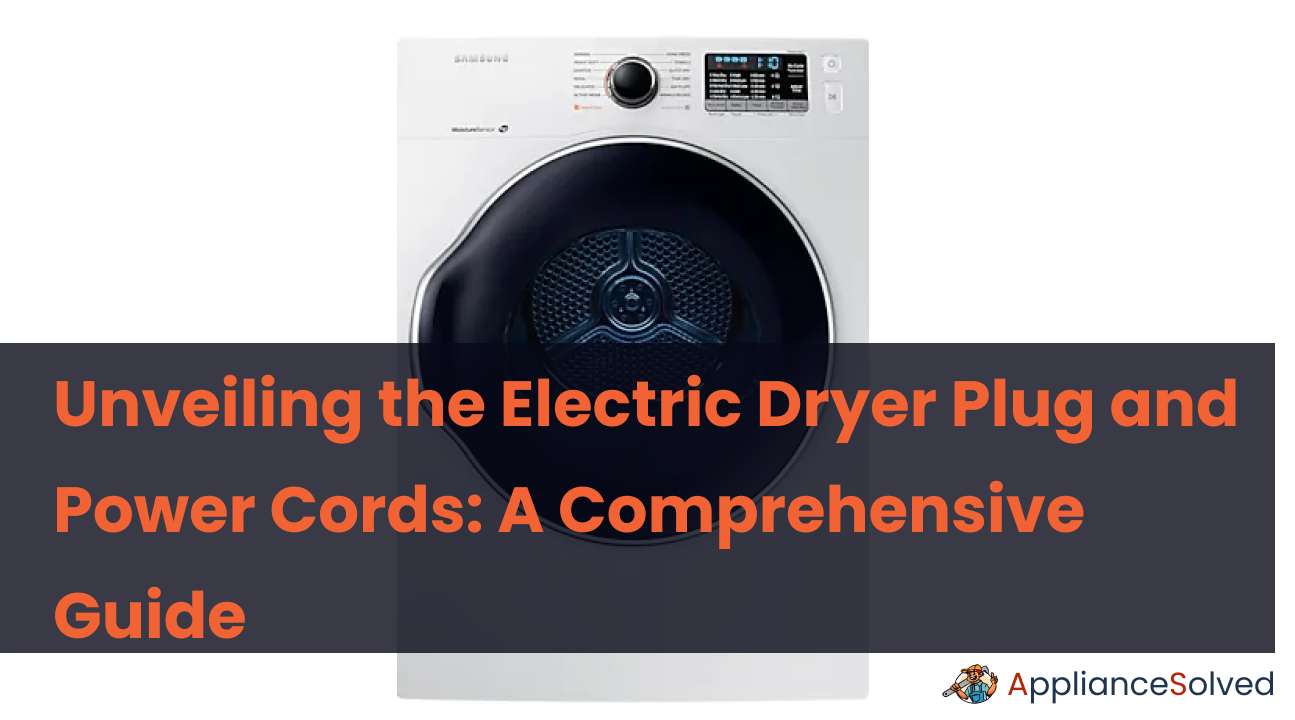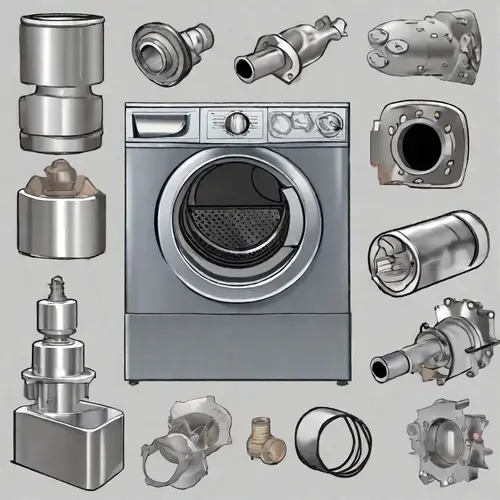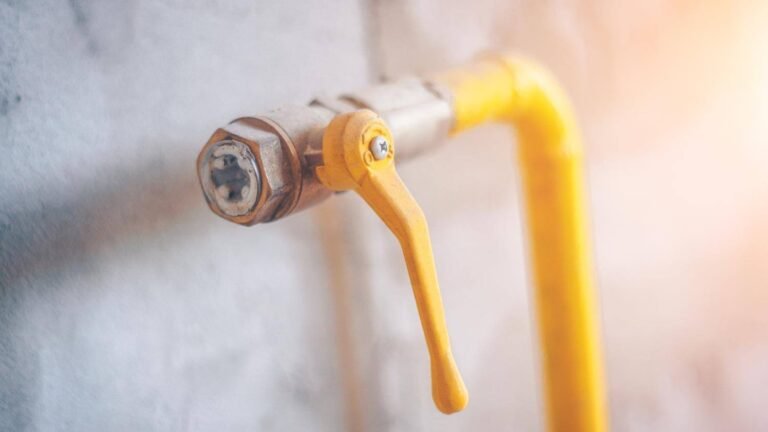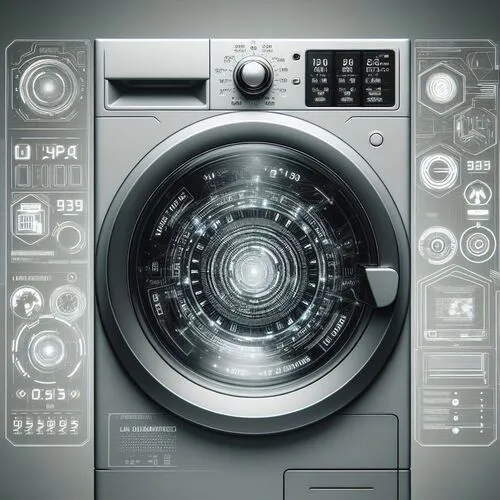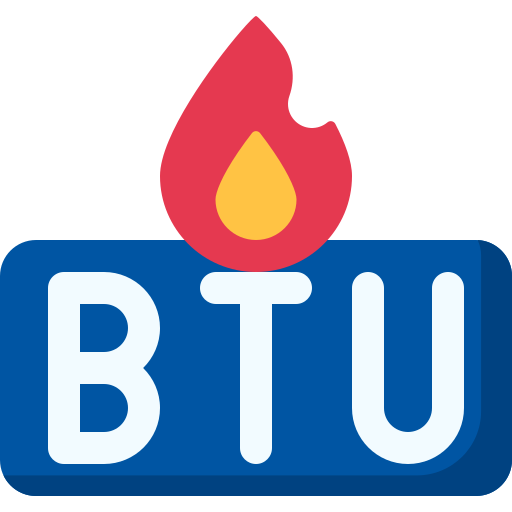Unveiling the Electric Dryer Plug and Power Cords: A Comprehensive Guide
Are you ready to delve into the world of electric dryer plugs and power cords? In this comprehensive guide, we’ll take you on a journey through the intricacies of electric dryer plugs and power cords, discussing their types, installation, troubleshooting, and more. As essential components of modern laundry routines, understanding electric dryer plugs and power cords is crucial for safety and efficiency.
What are the Electrical Dryer Plugs?
Electric dryer plugs are specialized electrical connectors that provide the interface between an electric dryer and the power source. They play a crucial role in facilitating the safe and efficient operation of electric dryers by delivering the required electrical power. These plugs are designed with specific configurations and prong arrangements to match the corresponding outlets and ensure proper electrical connections.
What are the types of electric dryer plugs?

There are different types of electric dryer plugs, each following a specific standard set by organizations like the National Electrical Manufacturers Association (NEMA). The two primary types of electric dryer plugs are the NEMA 10-30 and NEMA 14-30 plugs.
What is the NEMA 10-30 Plug?
The NEMA 10-30 plug is a three-pronged plug commonly used in older homes. It features two straight-blade prongs (hot wires) and a round prong (neutral wire). However, it lacks a grounding prong, making it less safe compared to modern configurations.
What is the NEMA 14-30 Plug?
The NEMA 14-30 plug is the standard for modern electric dryers. It has four prongs: two straight-blade prongs (hot wires), a round prong (neutral wire), and a fourth prong that serves as the grounding connection. This configuration offers enhanced safety by providing a dedicated grounding path.
How To Choose the Electric Dryer Plug?
The choice of electric dryer plug depends on the type of outlet you have and the specific requirements of your electric dryer. It’s important to match the plug configuration with the appropriate outlet type to ensure a secure and safe connection. If your home’s electrical system is outdated and has the NEMA 10-30 outlet, you might consider upgrading to a NEMA 14-30 outlet and a corresponding four-prong electric dryer plug for improved safety and compatibility.
When dealing with electric dryer plugs, it’s essential to prioritize safety during installation, maintenance, and usage. Incorrect connections or faulty plugs can lead to electrical hazards and affect the overall performance of your electric dryer. If you’re uncertain about installing or troubleshooting electric dryer plugs, it’s advisable to seek assistance from a professional electrician to ensure proper and safe installation.
What are the Electric Dryer Power Cords?

Electric dryer power cords are essential components that connect electric dryers to the power supply. These cords serve as the link between the dryer and the electrical outlet, enabling the dryer to receive the necessary electrical power to function efficiently. Electric dryer power cords are designed to match the specific plug configuration of the dryer and the corresponding outlet type, ensuring a safe and reliable connection.
What are the types of electric dryer power cords?
There are two main types of electric dryer power cords, each corresponding to a specific plug configuration:
What is the Three-Prong Power Cord?
A three-prong power cord is designed to connect electric dryers with a NEMA 10-30 plug configuration to electrical outlets. This power cord features three wires: two outer wires for the hot connections and a center wire for the neutral connection. It does not include a dedicated grounding wire. This type of power cord is typically used with older homes or outlets that lack grounding provisions.
What is the Four-Prong Power Cord?
A four-prong power cord is intended for electric dryers equipped with a NEMA 14-30 plug configuration. This power cord contains four wires: two outer wires for the hot connections, a center wire for the neutral connection, and an additional wire for grounding. The grounding wire enhances safety by providing a separate path for electrical currents to dissipate, reducing the risk of electrical shocks and hazards.
How To Choose the Electric Dryer Power Cord?
When selecting an electric dryer power cord, it’s crucial to choose the correct type that matches your dryer’s plug configuration and the outlet in your home. Using the appropriate power cord ensures a secure and safe electrical connection, preventing potential issues such as improper grounding or electrical overload.
Installing an electric dryer power cord involves attaching one end of the cord to the dryer’s plug and the other end to the electrical outlet. Proper installation is essential to prevent electrical hazards and ensure the dryer operates effectively. If you’re unsure about the installation process, it’s recommended to consult the dryer’s manufacturer instructions or seek assistance from a professional electrician.
Regular maintenance of the electric dryer power cord involves inspecting the cord for any signs of wear, fraying, or damage. Damaged cords should be replaced promptly to maintain safety. Additionally, ensuring a clean and secure connection between the power cord and the outlet helps prevent disruptions and potential hazards during operation.
How To Install Electric Dryer Plug and Power Cord: A Step-by-Step Guide
The installation process involves both the electric dryer plug and the power cord, check how to install an electric dryer from scratch. Here’s a step-by-step guide for a successful installation:
Step 1: Safety First
Prioritize safety by turning off the power source and wearing appropriate safety gear.
Step 2: Choose the Right Cord
Select a three-prong or four-prong power cord based on your dryer’s plug configuration and your home’s outlet type.
Step 3: Power Cord Installation
For a three-prong power cord:
- Connect the center wire to the center terminal.
- Connect the two outer wires to the remaining terminals.
For a four-prong power cord:
- Connect the green grounding wire to the grounding screw.
- Connect the white neutral wire to the center terminal.
- Connect the two hot wires to the outer terminals.
Step 4: Attaching the Plug
Attach the other end of the power cord to the electric dryer plug, following the same color-coded scheme.
Step 5: Plug into the Outlet
Insert the plug into the corresponding outlet, ensuring a snug fit.
How to change Electric Dryer Plug and Power Cord?
hanging an electric dryer plug and power cord involves several steps to ensure a safe and successful installation, also check test dryer outlet guide. It’s important to follow these steps carefully to prevent electrical hazards and ensure the proper functioning of your dryer. Here’s a step-by-step guide:
Note: Before you begin, make sure to turn off the power to the dryer’s circuit at the circuit breaker panel and unplug the dryer from the electrical outlet. Safety should always be your top priority when working with electrical components.
Materials Needed:
- New electric dryer power cord (three-prong or four-prong, depending on your dryer’s plug configuration)
- Screwdriver
- Wire stripper
- Wire nuts
- Voltage tester
Step 1: Choose the Right Power Cord
Determine whether your dryer requires a three-prong or four-prong power cord based on its plug configuration (NEMA 10-30 or NEMA 14-30). Purchase the appropriate power cord for your dryer model.
Step 2: Remove the Old Cord
- Locate the access panel at the back of the dryer where the power cord is connected.
- Use a screwdriver to remove the screws securing the access panel. Set the panel and screws aside.
- Inside the access panel, you’ll find the terminal block where the old power cord is connected. There should be three or four terminals, depending on your old cord’s configuration.
Step 3: Prepare the New Power Cord
- Strip about 1 inch of insulation from the ends of the power cord wires using a wire stripper.
- If you’re installing a three-prong cord, you’ll have two outer wires (hot wires) and a center wire (neutral wire).
- If you’re installing a four-prong cord, you’ll have two outer wires (hot wires), a center wire (neutral wire), and a green or bare wire (grounding wire).
Step 4: Attach the New Power Cord
- Identify the terminal block’s terminals where the wires were connected. Typically, the center terminal is for the neutral wire, and the outer terminals are for the hot wires.
- Attach the wires to their respective terminals. The colors of the wires may vary, but typically, black or red wires are hot, white wires are neutral, and green or bare wires are grounding wires.
- Use wire nuts to secure the wires to the terminals. Make sure the connections are tight and secure.
Step 5: Secure the Access Panel
- Place the access panel back onto the dryer’s rear and secure it with the screws you removed earlier.
- Ensure that the power cord wires are properly routed and not pinched or twisted by the panel.
Step 6: Plug in the Dryer
- Plug the new power cord into the appropriate electrical outlet.
- Turn on the power at the circuit breaker panel.
Step 7: Test the Dryer
- Before using the dryer, use a voltage tester to check the connections and make sure there is power at the terminal block.
- Turn on the dryer and run a test cycle to ensure that it’s functioning correctly.
Note: If you’re unsure about any step of the process, it’s best to consult the dryer’s manufacturer instructions or seek assistance from a professional electrician. Safety is paramount when working with electrical components.
By following these steps, you can safely and effectively change the electric dryer plug and power cord, ensuring that your dryer operates efficiently and without any safety concerns.
Troubleshooting and Maintenance: Ensuring Longevity and Performance
How can you troubleshoot common issues related to electric dryer plugs and power cords?
Both the electric dryer plug and power cord require periodic maintenance to ensure optimal performance. Here’s how to troubleshoot and maintain them:
Power Cord Fraying or Damage
Inspect the power cord regularly for signs of fraying or damage. If you notice any issues, replace the power cord promptly to prevent safety hazards.
Plug Connection Issues
If the plug doesn’t fit snugly or if you experience intermittent power loss, check the plug’s connections and ensure they are secure.
Cleaning and Dust Removal
Dust and lint can accumulate around the plug and outlet, affecting the connection. Regularly clean both the plug and the outlet to maintain a clean and secure connection.
Addressing Overheating
If you notice any signs of overheating, such as burning smells or discolored plugs, discontinue use immediately and consult a professional for assistance.
Upgrading to a Four-Prong Power Cord: Enhancing Safety and Compliance
Question: Why should you consider upgrading to a four-prong power cord, and how does it improve safety and compliance?
Upgrading to a four-prong power cord is a wise choice, especially if your home has a NEMA 14-30 outlet. This upgrade ensures proper grounding, reducing the risk of electrical shocks and hazards associated with inadequate grounding.
FAQ Electric Dryer Plug and Power Cords
What kind of plug does an electric dryer use?
Electric dryers typically use either a three-prong plug or a four-prong plug, depending on the specific configuration. Older models may use a NEMA 10-30 three-prong plug, while modern dryers usually utilize a NEMA 14-30 four-prong plug. The NEMA 14-30 plug includes two hot wires, a neutral wire, and a grounding wire, offering enhanced safety.
Do I need a 220 outlet for an electric dryer?
Yes, electric dryers require a 220-240 volt outlet, also known as a 220 outlet or a 240 outlet check 220 dryer plug wiring guide.These higher voltage outlets provide the power necessary for the heating element and motor in an electric dryer to operate effectively. It’s essential to ensure that your home’s electrical system can accommodate this voltage requirement before installing an electric dryer.
Are dryers 120 or 240?
Electric dryers operate at 240 volts, which is why they require a 220-240 volt outlet. This higher voltage allows the dryer to generate the heat needed to dry clothes efficiently. It’s crucial to have the correct voltage to match the dryer’s specifications for safe and proper operation.
Can I use a 3 prong cord on a 4 prong dryer?
While it is possible to use a three-prong cord on a four-prong dryer, it’s not recommended due to safety concerns. The NEMA 14-30 four-prong dryer plug includes a dedicated grounding wire for added safety. If your dryer has a four-prong plug and your home’s outlet is a three-prong type (NEMA 10-30), it’s safer to update the outlet to a NEMA 14-30 configuration and use a matching four-prong power cord. This ensures proper grounding and reduces the risk of electrical hazards. If you decide to go this route, it’s advisable to consult a professional electrician to ensure the correct installation and safety compliance
Is there a special plug for an electric dryer?
Yes, electric dryers use specific plugs designed to match their electrical requirements. There are two main types of plugs for electric dryers: the NEMA 10-30 three-prong plug and the NEMA 14-30 four-prong plug. The plug type depends on the dryer model and the electrical configuration in your home. The NEMA 14-30 plug is the standard for modern electric dryers as it includes a dedicated grounding wire for increased safety.
Do electric dryers come with power cords?
Yes, most electric dryers are sold without power cords. This is because the type of power cord required depends on the dryer’s plug configuration and the outlet type in your home. Electric dryers are typically sold with a power cord attached, but the end of the cord is left unconnected. This allows consumers to choose and install the appropriate power cord that matches their home’s electrical setup.
What type of dryer power cords are there?
There are two main types of dryer power cords based on the dryer’s plug configuration: three-prong power cords and four-prong power cords.
Conclusion
Understanding both electric dryer plugs and power cords is pivotal for maintaining a safe and efficient laundry routine. From comprehending NEMA configurations to seamlessly installing power cords, you’re now equipped with comprehensive knowledge to tackle electric dryer plug and power cord challenges confidently. Prioritize safety, follow the installation steps diligently, and conduct regular maintenance to enjoy hassle-free laundry days.

